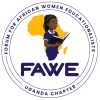The Gender Responsive Pedagogy (GRP) model was developed by Forum for African Educationalists (FAWE) in 2005 and reviewed in 2018. The model trains teachers to be more gender aware and equips them with the skills to understand and address the specific learning needs of both sexes. It develops teaching practices that engender equal treatment and participation of girls and boys in the classroom in the wider school community. It advocates for classroom practices that ensure equal participation of girls and boys, including a classroom environment that encourages both to thrive. Teachers are trained in the design and use of gender-responsive lesson plans, classroom interaction, classroom set-up, language use in the classroom, teaching and learning materials, management of sexual maturation, strategies to eliminate sexual harassment, gender-responsive school management systems, and monitoring and evaluation.
The GRP model contributes to the realization of the global frameworks on development, especially the 2015 Incheon Declaration on Education (Education 2030 Framework for Action), the Sustainable Development Goal: 4, “ensure inclusive and equitable quality education and promote lifelong learning opportunities for all” particularly target 4.5 which obligates all countries to put in place measures to eliminate gender disparities in education by 2030. At the continental level, the Continental Education Strategy for Africa 2016- 2025 (CESA16-25) presents a very strong case for gender equality for its successful implementation. To actualize this, the Gender Equality Strategy for CESA 16-25 was developed to provide a framework for integrating gender in education sector policies and strategies. The GRP model is one of those models that was designed to facilitate the integration of gender issues in education at all levels.
Across Africa, the GRP model has been used as a reference material by in-service teachers in different teacher training colleges and schools in Burkina Faso, Chad, Ethiopia, the Gambia, Guinea, Kenya, Malawi, Namibia, Rwanda, Senegal, Tanzania, Uganda, and Zambia. FAWE Uganda, piloted the GRP model in Bukomero SS in Kiboga district in 2009 to create a Centre of Excellence (CoE). From 2017-19, FAWE Uganda implemented the GRP Model in 40 Secondary schools in four regions of Uganda to promote Science, Technology, Engineering and Mathematics among secondary school girls in Uganda. By the end of the project, there was a 40% increase in uptake of STEM subjects at the advanced level, adoption of positive language towards girls in project schools, provision of basic needs e.g. sanitary pads, and promotion of re-entry for child mothers into school.
